One year ago, what is arguably Taiwan’s most beautiful cross-island highway reopened after a 13-year closure due to typhoon damage. During this time, three of Taiwan’s easier 100 Peaks were left inaccessible, except to those willing to sneak around checkpoints at night, hide from police patrols in the bush and summit these peaks illegally.
With the reopening of the road, the Southern Three Stars (南橫三星) are once again legally accessible. The logistics are slightly more complicated now as one section of the road is closed overnight, but this has not stopped throngs of hikers from making their way up here to make up for lost time, summiting three (or four) new 3,000-meter peaks over a weekend.
For non-hikers, just going along for the drive is a worthwhile trip, as the road passes through the majestic scenery of Yushan National Park on its way up to the highest road tunnel in Taiwan and down the other side.
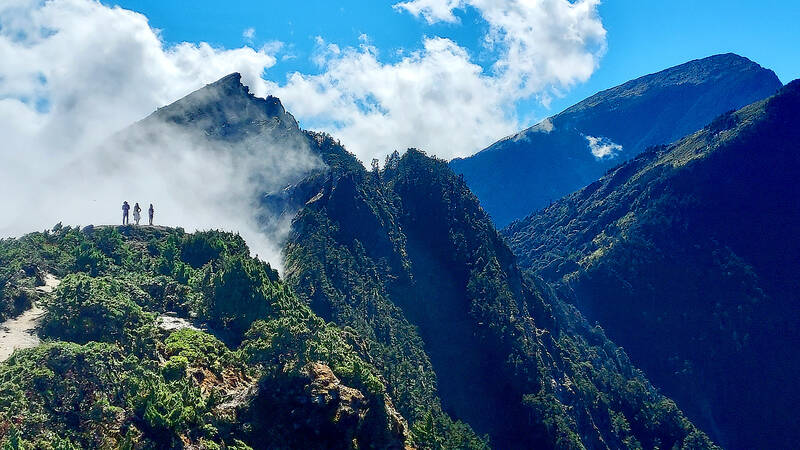
Photo: Tyler Cottenie
The Three Stars are on a restricted section of the road that runs from Meishankou (梅山口) in the west to Xiangyang (向陽) in the east. Cars may enter this section five days a week (not Tuesdays or Thursdays) between 7am and 2pm, but must exit from one of those checkpoints before 5pm.
For a westward journey through the Three Stars, enter from Xiangyang and continue up to the enormous landslides caused by Typhoon Morakot in 2009. Even in a country where sprayed concrete and other slope stabilization measures are ubiquitous, the extent of the repair work done here over the last decade is still awe-inspiring. Bare rock extends half a kilometer upward from the highway in places, and despite the obvious efforts to hold back the forces of nature here, one can’t help but wonder how long this road can survive.
GUANSHANLINGSHAN
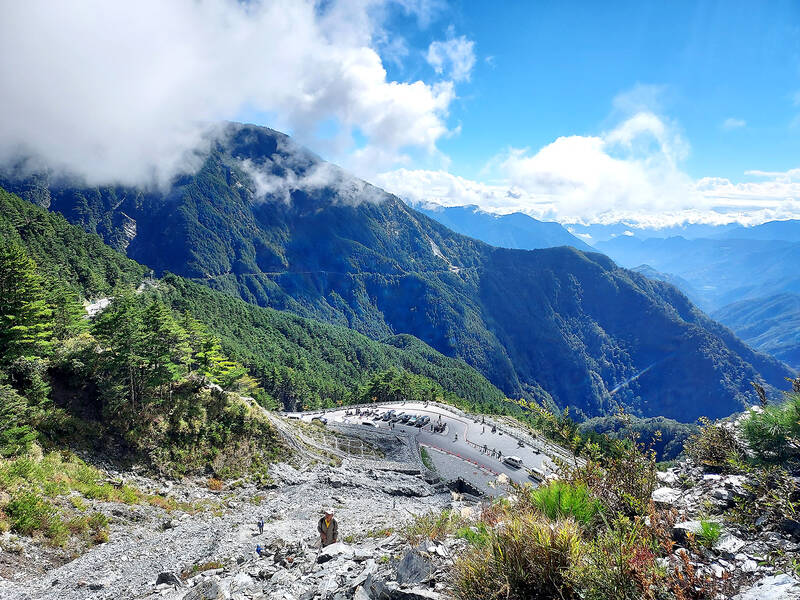
Photo: Tyler Cottenie
At the road’s highest point, the Daguanshan Tunnel (Taiwan’s highest road tunnel) cuts through the spine of the Central Mountain Range from Taitung County into Kaohsiung. The trailhead for the first of the Three Stars, Guanshanlingshan (關山嶺山), is right next to the east entrance of the tunnel. If you plan to drive yourself, it’s best to arrive early, as the parking lot here is rather small and there is nowhere else to park for several kilometers on either side.
The trail ascends steeply through scree for a time before reaching the Central Mountain Range spine above the tunnel. The trail to the peak makes a right turn here to follow the ridge upward, but look closely straight ahead and a hint of an old trail through the bamboo is still visible. This was the Japanese-era Guanshan Cross-Island Trail, one of many similar ones built in the early 20th century to try to control the indigenous population.
The rest of the trail to the peak is well marked and obvious, requiring about an hour and a half. On a weekend, expect a lot of people here celebrating their successful ascent, as this is the easiest and most popular of the Three Stars. If you can find a spot to sit down, the view here on a clear day is well worth taking in: farms along the highway are visible deep in the valley below, and there is often a beautiful sea of clouds on the Taitung side of the mountains.
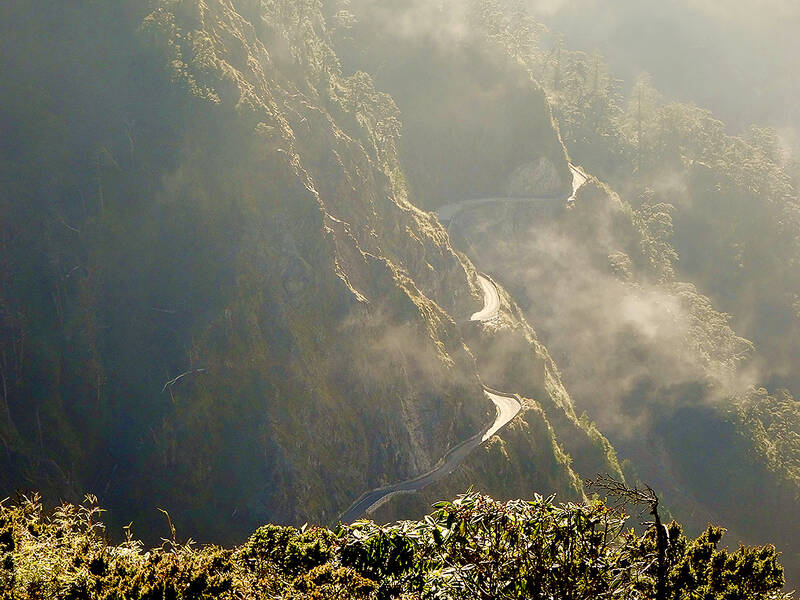
Photo: Tyler Cottenie
TAGUANSHAN
The middle peak of the Three Stars is the most impressive, in terms of both the trail and the view at the top. After passing through the Daguanshan Tunnel, continue to the trailhead at the 33.4K marker. If no roadside parking is left here, there is a bigger parking area 200 meters further down the road. For those planning to do Taguanshan (塔關山) after Guanshanlingshan on the same day, be mindful of the time before setting out, as the round trip takes three and a half to four hours for the average hiker; recall that everyone must exit via Meishankou or Xiangyang by 5pm.
In contrast to the completely exposed trail up Guanshanlingshan, this trail is entirely forested. Near the beginning, there are several large photogenic Taiwan hemlocks right next to the trail. A hemlock canopy and Yushan cane bamboo forest floor accompany hikers all the way to the peak, where the forest finally opens up on a breathtaking view. To the east, the mountain drops off in a sheer cliff, while a bare, broken rocky ridge continues to the south, rising up to the mighty Guanshan (關山).

Photo: Tyler Cottenie
KUHANUOSINSHAN
Further west along the highway, the bridge at 28.3K marks the trailhead for the last of the Three Stars, Kuhanuosinshan (庫哈諾辛山). As the longest trail of the Three Stars with the least exciting view at the top, a day trip to this peak hardly deserves a glowing recommendation. If you are not trying to collect all of Taiwan’s 100 Peaks, you could do better things with your time. However, for those willing to spend two days in the area, it’s a different story altogether, as there are other features nearby that redeem this otherwise lackluster peak.
The trail initially climbs up a steep hill with a great many stairs. Thousands of them, in fact. If you have the physical and mental fortitude to get through this section, the trail finally levels out on the top of a ridge where a Yushan National Park cabin sits. With advance application, it is possible to stay here overnight. Spending a night here breaks the hike up in the middle and gives you time to physically (and mentally) recharge. The dark night sky and thin air here give overnight guests a stargazing experience unlike anything down in the city. And finally, the extra day allows for an ascent of nearby Guanshan, which towers half a kilometer over the Three Stars.
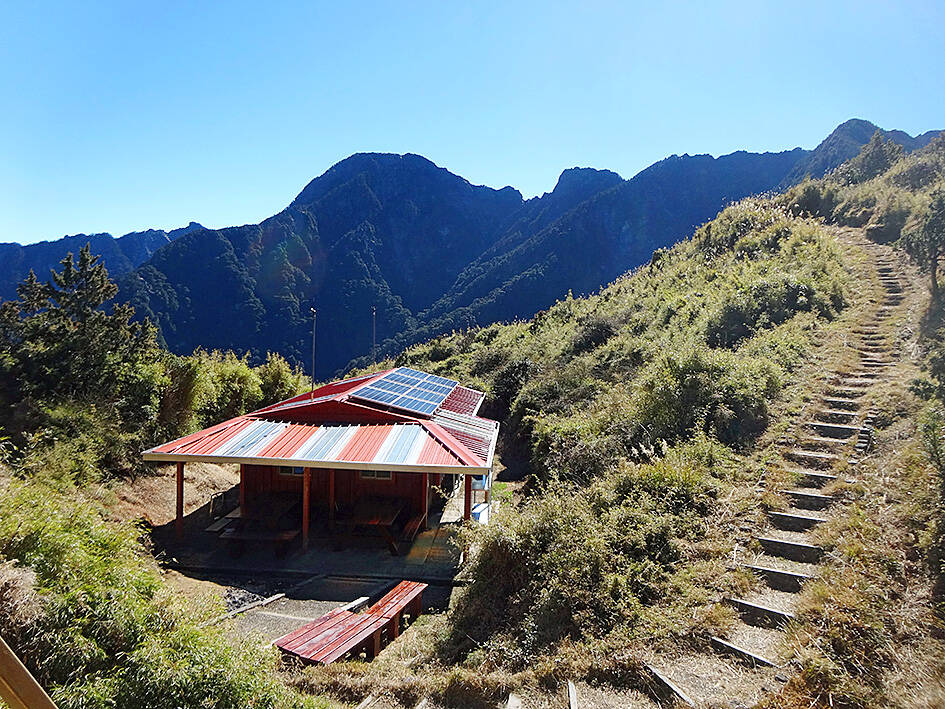
Photo: Tyler Cottenie
Just behind the cabin, there is a fork in the trail: the right one leads to Kuhanuosin Mountain, while the trail to the left leads to Guanshan. The former can be done on the first day in the afternoon, while the latter will take up most of the second day. The Guanshan trail is a mix of forest and open bamboo meadow, with an exciting rope climb up a vertical wall in the middle. Upon finally reaching the top (a wide, flat peak ideal for a picnic lunch) you are standing on the southern border of Yushan National Park and the entire park is within view. Return to the cabin to grab your overnight gear and you should make it down to the highway in time to clear out by the 5pm deadline.
LOGISTICS
Whether you have one, two, or even three days free, there is a Southern Three Stars itinerary that’s right for you. For overnight trips, it’s no longer possible to leave a vehicle at the trailhead after 5pm, so hiring a driver for drop-off on Day 1 and pickup on Day 2 is the only practical option. For single day trips, hiring a driver eliminates the hassle of finding parking, but going in your own car is also possible. Scooters are much easier to park, and are a much more engrossing way to experience the South-Cross Highway, so this option is highly recommended. Travel by bicycle and on foot is not permitted on this section of the highway.
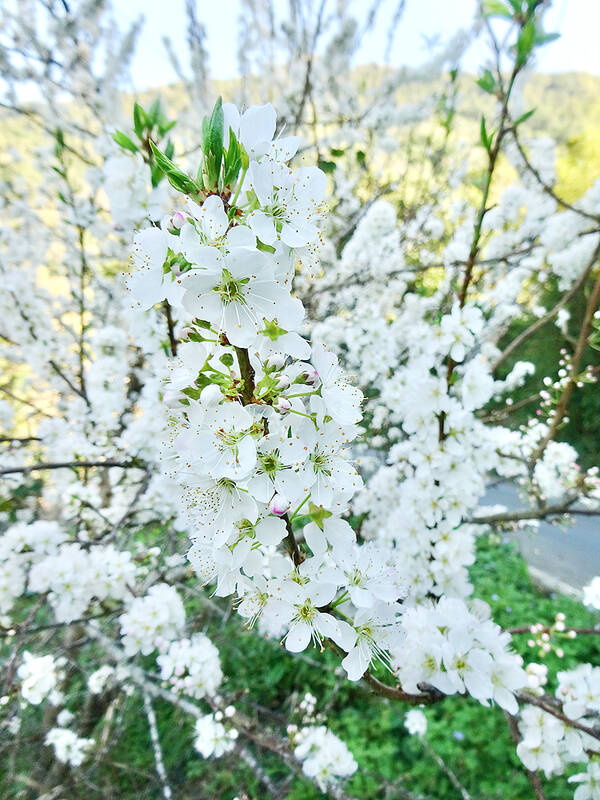
Photo: Tyler Cottenie
Police permits are required for all of these mountains, and can be booked online 5 days ahead of time (Chinese only: nv2.npa.gov.tw/NM107-604Client/) or any time in person at the Meishankou and Xiangyang police stations. A national park permit is required for Kuhanuosin and Guanshan, both for day trips and overnight stays (English: npm.cpami.gov.tw/en/apply_1.aspx). Guided package tours can be arranged with Blue Skies Adventures (www.blueskiestaiwan.com).
GUANSHANLINGSHA
Elevation: 3176m
Ascent: 450m
Round-trip time: 3 – 3.5 hrs
Trailhead: East side of Daguanshan Tunnel
Permits: Police
TAGUANSHAN
Elevation: 3222m
Ascent: 650m
Round-trip time: 3.5 – 4 hrs
Trailhead: 33.4K mark east of Meishankou
Permits: Police
KUHANUOSIN
Elevation: 3115m
Ascent: 950m round-trip
Round-trip time: 6.5 hrs to/from trailhead
Trailhead: 28.3K mark east of Meishankou
Permits: Police, National Park
GUANSHAN
Elevation: 3668m
Ascent: 650m
Round-trip time: 7.5 – 8 hrs to/from cabin
Trailhead: Kuhanuosin Cabin
Permits: Police, National Park

Taiwan doesn’t have a lot of railways, but its network has plenty of history. The government-owned entity that last year became the Taiwan Railway Corp (TRC) has been operating trains since 1891. During the 1895-1945 period of Japanese rule, the colonial government made huge investments in rail infrastructure. The northern port city of Keelung was connected to Kaohsiung in the south. New lines appeared in Pingtung, Yilan and the Hualien-Taitung region. Railway enthusiasts exploring Taiwan will find plenty to amuse themselves. Taipei will soon gain its second rail-themed museum. Elsewhere there’s a number of endearing branch lines and rolling-stock collections, some

The Democratic Progressive Party (DPP), Chinese Nationalist Party (KMT), and the country’s other political groups dare not offend religious groups, says Chen Lih-ming (陳立民), founder of the Taiwan Anti-Religion Alliance (台灣反宗教者聯盟). “It’s the same in other democracies, of course, but because political struggles in Taiwan are extraordinarily fierce, you’ll see candidates visiting several temples each day ahead of elections. That adds impetus to religion here,” says the retired college lecturer. In Japan’s most recent election, the Liberal Democratic Party lost many votes because of its ties to the Unification Church (“the Moonies”). Chen contrasts the progress made by anti-religion movements in

Could Taiwan’s democracy be at risk? There is a lot of apocalyptic commentary right now suggesting that this is the case, but it is always a conspiracy by the other guys — our side is firmly on the side of protecting democracy and always has been, unlike them! The situation is nowhere near that bleak — yet. The concern is that the power struggle between the opposition Chinese Nationalist Party (KMT) and their now effectively pan-blue allies the Taiwan People’s Party (TPP) and the ruling Democratic Progressive Party (DPP) intensifies to the point where democratic functions start to break down. Both

This was not supposed to be an election year. The local media is billing it as the “2025 great recall era” (2025大罷免時代) or the “2025 great recall wave” (2025大罷免潮), with many now just shortening it to “great recall.” As of this writing the number of campaigns that have submitted the requisite one percent of eligible voters signatures in legislative districts is 51 — 35 targeting Chinese Nationalist Party (KMT) caucus lawmakers and 16 targeting Democratic Progressive Party (DPP) lawmakers. The pan-green side has more as they started earlier. Many recall campaigns are billing themselves as “Winter Bluebirds” after the “Bluebird Action”